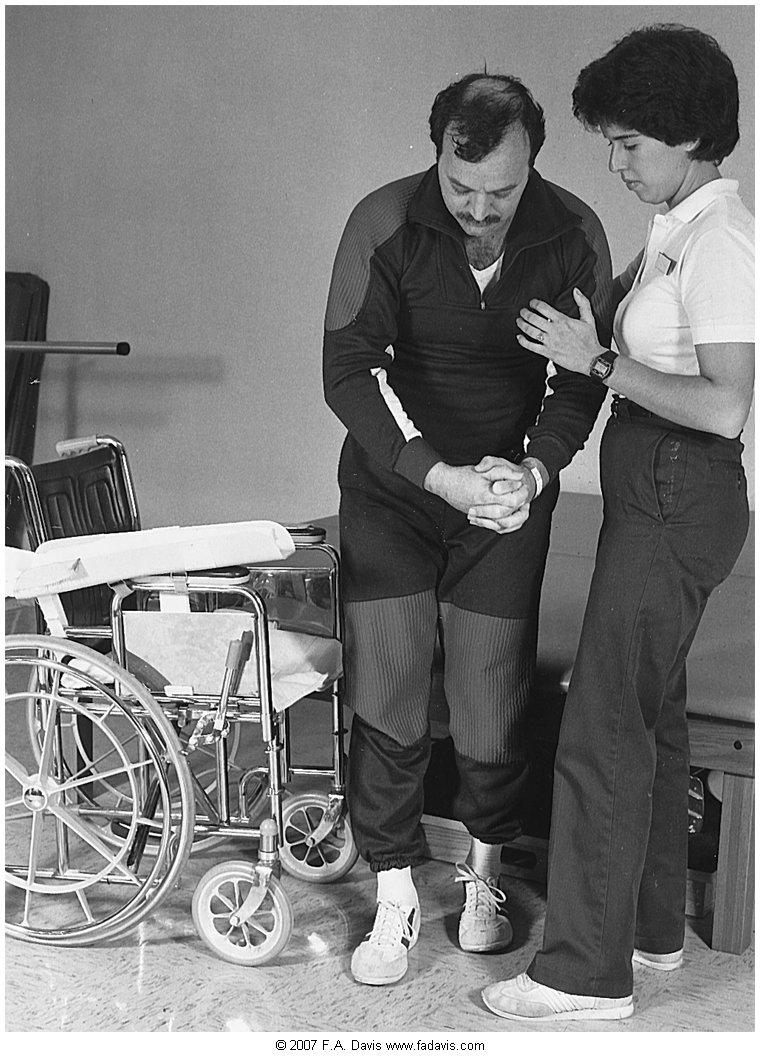Interventions to Support Sensory Systems
PTAs can provide opportunities for patients with sensory dysfunction to attend, discriminate, and functionally adapt to sensory information so that movement improves during functional activities. In PTA 132L, 133L, and 104L, we introduced orthopedic interventions, such as closed chain activities, that facilitate improvements in kinesthesia and proprioception. Additional examples of interventions to support sensory systems while working to improve movement and motor control include:
- manually-facilitated stretching followed by functional activities
- superficial and deep pressure and tapping to increase attention to affected area(s)
- weight bearing activities (closed chain): prolonged stretch can reduce spasticity while practicing functional activities
- stereognosis activities (e.g., identifying and object placed in the hand with eyes closed)
PTAs instruct patients and family members in strategies to increase attention to sensory stimulation and integration. As patients recall and reuse strategies to attend to stimuli, the neuromuscular system is set up to become as successful as possible. Sensory neglect and visual field cuts impact safety and recovery of the involved side. As the patient progresses, cueing should decrease and the situations and environments should be made progressively more complex to optimize functional recovery. The following are examples of using multi-modal feedback to promote attention to areas of sensory impairment and neglect during functional tasks:
- tie a colored ribbon around wrist on involved side and cue patient to keep the ribbon in sight during an activity
- position in bed to facilitate visual attention to neglected side (e.g., sidelying with TV/radio on involved side, arms supported by pillows)
- use sound (voice, bells, snaps) on involved side to encourage localization and attention to the involved side
- practice upper extremity activities that require patient cross midline
- provide multiple methods of visual, tactile, and proproceptive stimuli to provoke functional use of the affected side.
Use of Supportive Devices to Improve ROM and Joint Mobility
- Position UE on lap tray or arm trough
- Tone reducing UE splints (resting splints, hand cones) to prevent hand contractures
- Wheelchair positioning with pommel cushion or anti-thrust cushion
- Prone positioning for hip flexor stretching
- Standing frame activities for WB stretch to calf and plantar foot
toc | return to top | previous page | next page


